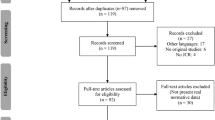Abstract
Verbal reasoning is a complex, multicomponent function, which involves activation of functional processes and neural circuits distributed in both brain hemispheres. Thus, this ability is often impaired after brain injury. The aim of the present study is to describe the construction of a new verbal reasoning test (VRT) for patients with brain injury and to provide normative values in a sample of healthy Italian participants. Three hundred and eighty healthy Italian subjects (193 women and 187 men) of different ages (range 16–75 years) and educational level (primary school to postgraduate degree) underwent the VRT. VRT is composed of seven subtests, investigating seven different domains. Multiple linear regression analysis revealed a significant effect of age and education on the participants’ performance in terms of both VRT total score and all seven subtest scores. No gender effect was found. A correction grid for raw scores was built from the linear equation derived from the scores. Inferential cut-off scores were estimated using a non-parametric technique, and equivalent scores were computed. We also provided a grid for the correction of results by z scores.
Similar content being viewed by others
References
Johnson-Laird PN (1988) Levels of representation. Science 239:1546–1547
Carriedo N, Corral A, Montoro PR, Herrero L, Ballestrino P, Sebastián I (2016) The development of metaphor comprehension and its relationship with relational verbal reasoning and executive function. PLoS One 11(3):e0150289. doi:10.1371/journal.pone.0150289
Goldstein K (1936) The significance of the frontal lobes for mental performances. J Neurol Psychopathol 17:27–40
Benton AL (1968) Differential behavioral effects in frontal lobe disease. Neuropsychologia 6:53–60
Hirst W, Volpe BT (1988) Memory strategies with brain damage. Brain Cogn 8:379–408
Goel V (2007) Anatomy of deductive reasoning. Trends Cogn Sci 11:435–441
Waechter RL, Goel V, Raymont V, Kruger F, Grafman J (2013) Transitive inference reasoning is impaired by focal lesions in parietal cortex rather than rostrolateral prefrontal cortex. Neuropsychologia 51:464–471
Caramazza A, Gordon J, Zurif EB, De Luca D (1976) Right-hemispheric damage and verbal problem solving behavior. Brain Lang 3:41–46
Whitaker HA, Markovits H, Savary F, Grou C, Braun C (1991) Inference deficits after brain-damage. J Clin Exp Neuropsychol 13:38
Adolphs R, Tranel D, Bechara A, Damasio H, Damasio AR (1996) Neuropsychological approaches to reasoning and decision-making. In: Christen Y, Damasio AR, Damasio H (eds) Neurobiology of decision making. Springer, New York, pp 157–179
Goel V, Tierney M, Sheesley L, Bartolo A, Vartanian O, Grafman J (2007) Hemispheric specialization in human prefrontal cortex for resolving certain and uncertain inferences. Cereb Cortex 17:2245–2250
Reverberi C, Shallice T, D’Agostini S, Skrap M, Bonatti LL (2009) Cortical bases of elementary deductive reasoning: inference, memory, and metadeduction. Neuropsychologia 47:1107–1116
Kopp B, Rösser N, Tabeling S, Stürenburg HJ, de Haan B et al (2013) Performance on the Frontal Assessment Battery is sensitive to frontal lobe damage in stroke patients. BMC Neurol 13:179
Babcock L, Vallesi A (2015) The interaction of process and domain in prefrontal cortex during inductive reasoning. Neuropsychologia 67:91–99
Petrides M, Pandya DN (1999) Dorsolateral prefrontal cortex: comparative cytoarchitectonic analysis in the human and the macaque brain and corticocortical connection. Eur J Neurosci 11:1011–1036
Handley SJ, Capon A, Copp C, Harper C (2002) Conditional reasoning and the Tower of Hanoi: the role of spatial and verbal working memory. Br J Psychol 93:501–518
Capon A, Handley S, Dennis I (2003) Working memory and reasoning: an individual differences perspective. Think Reason 9:203–244
Bunge SA, Wendelken C, Badre D, Wagner AD (2005) Analogical reasoning and prefrontal cortex: evidence for separable retrieval and integration mechanisms. Cereb Cortex 15:239–249
Luria AR (1976) Cognitive development, its cultural and social foundations. Harvard University Press, Cambridge
Dubois B, Slachevsky A, Litvan I, Pillon BFAB (2000) The FAB A frontal assessment battery at bedside. Neurology 55:1621–1626
Wechsler D (2008) Wechsler adult intelligence scale-fourth. Pearson, San Antonio
Davies G, Piovesana A (2015) Adult verbal abstract reasoning assessment instruments and their clinimetric properties. Clin Neuropsychol 29:1010–1033
Poinstingl H (2009) The linear logistic test model (LLTM) as the methodological foundation of item generating rules for a new verbal reasoning test. Psychol Test Assess Model 51:123–134
Spinnler H, Tognoni G (1987) Taratura e standardizzazione italiana di test neuropsicologici. Ital J Neurol Sci 6(Suppl 8):1–120
Capitani E, Laiacona M (1988) Aging and psychometric diagnosis of intellectual impairment: some considerations on test scores and their use. Dev Neuropsychol 4:325–330
Capitani E, Laiacona M (1997) Composite neuropsychological batteries and demographic correction: standardization based on equivalent scores, with a review of published data. J Clin Exp Neuropsychol 19:795–809
Monaco M, Costa A, Caltagirone C, Carlesimo GA (2013) Forward and backward span for verbal and visuo-spatial data: standardization and normative data from an Italian adult population. Neurol Sci 34:749–754
R Development Core Team (2011) R: a language and environment for statistical computing. R Foundation for Statistical Computing, Vienna
Akaike H (1974) A new look at the statistical model identification. IEEE Trans Autom Control 19:716–723
Brugnolo A, De Carli F, Accardo J, Amore M, Bosia LE et al (2016) An updated Italian normative dataset for the Stroop color word test (SCWT). Neurol Sci 37:365–372
Wilks SS (1941) Determination of sample size for setting tolerance limits. Ann Math Stat 12:91–96
Halpern DF, Wright T (2000) Sex differences in cognitive abilities, 3d edn. Erlbaum, Hillsdale
Colom R, Contreras MJ, Arend I, Garcia Leal O, Santacreu J (2004) Psychological Record 54:365–372
Acknowledgements
We are grateful to Carolina Nozzolillo and Paola Carnevale for their help in the administration of the test.
Author information
Authors and Affiliations
Corresponding author
Ethics declarations
Conflict of interest
The authors declare that they have no conflict of interest.
Rights and permissions
About this article
Cite this article
Basagni, B., Luzzatti, C., Navarrete, E. et al. VRT (verbal reasoning test): a new test for assessment of verbal reasoning. Test realization and Italian normative data from a multicentric study. Neurol Sci 38, 643–650 (2017). https://doi.org/10.1007/s10072-017-2817-9
Received:
Accepted:
Published:
Issue Date:
DOI: https://doi.org/10.1007/s10072-017-2817-9




